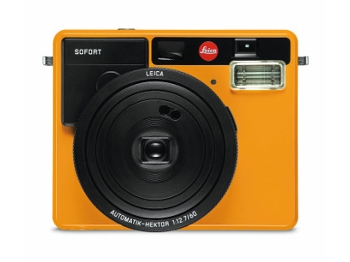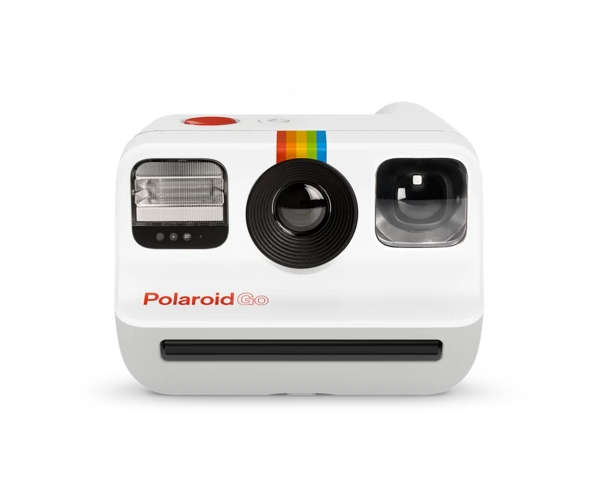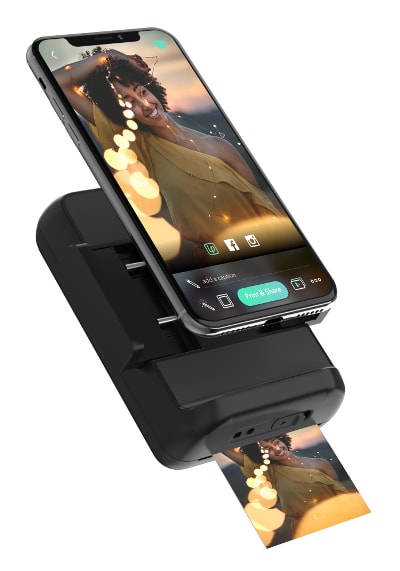
The instantcamera is back! From release to the finished photo in a few minutes – this way of taking pictures has lost nothing of its fascination. Today the instant camera is more popular than ever. Whether at parties, weddings or just to capture the moment, the instant photo is back!
The best Instant Cameras 2023: The 5 top dogs
We’ve looked at the best instant cameras in comparison and put the ultimate Top 5 instant cameras in our ranking. These are the most popular cameras:
Modern instantcameras: Clever technology with the retro charme
They were already said to be dead, but they have been resurrected: Instant cameras are back and for good reason. The pictures have a special charm and preserve memories in a unique format. At parties, the instant camera is quickly the center of attention, and the prints are popular giveaways. Click and go – the souvenir is ready to go. There is a reason that the former pioneer of instant camera production, Polaroid, initially stopped production completely in 2008, only to bring an instant camera model back onto the market in 2010 with the Polaroid 300 (see the story of the “Impossible Project“. Today, this classic camera has a loyal fan base and there is a wide range of different models. And so-called hybrid cameras or digital instant cameras like the Fujifilm Instax Mini Liplay even combine the advantages of a digital camera and a real foto. But what is such a camera with the fast image actually suitable for?

- photographers at events (parties, birthdays): the prints can be distributed immediately
- Photographers who need a quick print (e.g. for quick documentation)
- As a test shot: the fast image enables an assessment of the (light) conditions
- As a supplement for digital photographers who otherwise hardly ever develop their shots.
- As unique specimen as contrast to any digital photography
The cost of an Instant Camera
The purchase costs of an instant camera range from 70 bucks for entry-level models (e.g. Fujifilm Instax Mini 11) to about 250 dollars for more sophisticated models. For top models such as the MiNT SLR670-s, however, one might put 700 dollars and more on the table. In any case, the cost factor film should be considered. Depending on the photo paper, the costs per photo are between 0.60 and 2.60 dollars.
The Brands: from Polaroid to Fujifilm

When it comes to instant cameras there is no getting around these manufacturers: Whether Polaroid with the brandnew Now Plus, Fujifilm with the Instax Square SQ6 Gold, the Leica “Sofort” or Kodak with the Printomatic – the well-known names of the photographic industry dominate here too.
The various brands not only differ in appearance, from oldschool to modern, everything is there. The technology and image formats also vary from manufacturer to manufacturer, so it is worth comparing some models in advance. Specially concerning the prices of films, there are significant differences. The most common instant picture camera brands at a glance:
The history of the instant camera is Polaroid
The brand name Polaroid is synonymous with instant cameras. This is simply because Polaroid invented the modern instant camera. Admittedly, there was technology that had a similar approach even before that (see Jules Andre Gabriel Bourdin). But the age of modern instant cameras was heralded by a certain Edwin Herbert Land in 1947 – the Polaroid was born. To this day, this brand name is used to describe cameras with instant photo printing. The images of the first Polaroid films were initially sepia-colored, followed by classic black and white films and finally color films.
The only serious competitor for Polaroid at this time was the Kodak company in the 70s. Until the mid-80s, the company was able to secure market shares for instant cameras, before a lost lawsuit with Polaroid ended this era.
The end of Polaroid and a new beginning
Although the company had a virtual monopoly on instant cameras, production of the cameras and associated film was discontinued in 2008. The pressure from digital cameras and the increasing availability of cell phone cameras was too much. Only the takeover of a film production factory by the company “Impossible Project” ensured that films for Polaroid’s still popular instant cameras continued to be produced. In the meantime, Polaroid instant cameras are once again being sold by the Polaroid brand itself (recently again under the original brand name, like the world’s smallest Polaroid, the Go). Now that the patents have expired, other manufacturers such as Fujifilm have been able to assert themselves on the market with their own instant cameras.

MiNT Polaroid Cameras
MiNT has a special place in the history of Polaroid. MiNT restores old but legendary Polaroid models like the SX-70. So these cameras and their very special style live on and inspire instant photographers all over the world.
Mobile photo printers as an alternative to the instant camera

For those not interested in a distinct camera, mobile photo printers can be a real alternative. Thanks to Zink photo printing, the printers are surprisingly handy today (e.g. the Canon Zoemini), and their small dimensions make them practical for travelling. If you prefer the classis format, you might take a look at the Polaroid Lab printer. The advantage of photo printers is obvious. In contrast to the typical instant camera, the photos can be sorted out before printing. Especially in comparison to more expensive instant films the printer helps to save money. From smartphone to printed picture, it’s easy done with mobile photo printers. And with models like the Instax Mini Link Printer you can even print your photos in the popular Instax Mini format.
Instant Camera Pros and Cons
While we obviously see a lot of pros when it comes to instant cameras, we do want to share a few cons you might want to consider before buying one. Here are some of the pros and cons we think are important:
Pros
- Value of the picture compared to digital ones
- Pushes your creativity while shooting
- Images make perfect gifts
- Unique image style without digital filters
- Pictures are a long lasting memory
Cons
- Extra item to carry
- Relatively high costs per picture
- Failed pictures do cost real money
The technology of (modern) instant cameras
The technology of an instant camera differs from other cameras mainly by the fast availability of the developed photo. This is made possible by a stack of photopaper inside the camera. This photographic paper consists of two layers, the negative and the positive. After the shutter release button is pressed and the negative is exposed, the two layers are joined together when the photo is pulled out. The chemicals needed to develop the image are already contained between the layers. After a different exposure time depending on the type of film (black and white, color), the image is completely developed.
A different technique is used for example with the Canon Zoemini S. With the so-called Zink photo paper, the colour pigments are already contained in the paper.
Films and Sizes
The image size of an instant camera usually depends on the manufacturer. Fujifilm, for example, offers formats such as the Instax Mini or the Instax Wide Format. Popular Polaroid formats are the Polaroid 600 (for the Polaroid 600 Series) or Polaroid SX-70 (overview Polaroid films). They differ both in size and in the image ratio. While the Fujifilm Instax Mini format provides a portrait format with a visible part of 6,2 x 4,6, the above mentioned Polaroid formats are classically square (we explain all Instax Films here). With the Instax SQ 1, Fujifilm also offers a square format. The films also differ considerably in price. Polaroid films are usually more expensive than Fujifilm films for the Instax Mini 8 or Instax Mini 9, for example. More information can be found in our article about formats and image sizes of the most popular cameras!
Instant camera: no shaking
It’s a common scene, as soon as the picture comes out of the instant camera, it will be shaken like hell. But this “technique” comes from a time when the picture (after removing the foil) was actually still wet. Nowadays, the chemicals are firmly enclosed in the picture, air supply is completely unnecessary. On the contrary: by shaking there is a danger of bubbles forming. Manufacturers like Polaroid therefore strongly advise against this antiquated technique.
Disposable cameras are not instant cameras
A common mistake is to confuse the disposable camera with instant cameras. The advantage of disposable cameras is the low purchase price, usually the models are disposed of after the film has been shot. The technology corresponds to the usual camera with film.